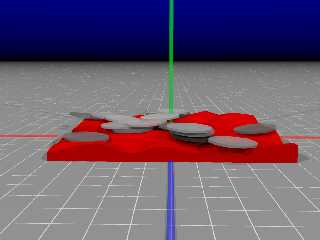|
 |
"Chris R" <car### [at] comcast net> wrote:
> kurtz le pirate <kur### [at] free net> wrote:
> kurtz le pirate <kur### [at] free fr> wrote:
> > On 21/07/2025 15:57, Bald Eagle wrote:
> > > Josh English <Jos### [at] joshuarenglish fr> wrote:
> > On 21/07/2025 15:57, Bald Eagle wrote:
> > > Josh English <Jos### [at] joshuarenglish com> wrote:
> > >
> > >> The only other way I could think to do this
> > >
> > > Way back, people were using Koppi's Bullet Physics to drop and place objects.
> > > Presumably there is code one can look at to understand how object collision was
> > > detected, and how objects were placed once finally coming to rest.
> > >
> >
> >
> > Deep in my hard drive, in a 2001 archives, I found a Jonathan Rafael
> > Ghiglia demo that stacks letters.
> >
> >
> > I'm attaching the archive to this message, in case it's of any use.
> >
> >
> >
> >
> > --
> > kurtz le pirate
> > compagnie de la banquise
>
> Thanks for digging this up. I am thinking I will try and implement this method
> as an alternative using my own coding style, POV 3.8 features, and fitting into
> my library code framework, and then compare the results with the triangle-based
> version. It appears there is some interesting code to deal with the problem of
> local, small plateaus on the surface object to try out.
>
> -- Chris R
I wrote the code based on the letter stacking code in libcollide.inc and
debugged it, and added the grid generation piece to my libmesh.inc library.
Here are the results of repeatedly adding 20 discs to the same uneven surface
using the algorithm. I think it does pretty well and it's actually quick enough
that you could run it during rendering, but I kept the option to write the
transforms to a file so you can pre-create them.
More testing to do...
-- Chris -R com> wrote:
> > >
> > >> The only other way I could think to do this
> > >
> > > Way back, people were using Koppi's Bullet Physics to drop and place objects.
> > > Presumably there is code one can look at to understand how object collision was
> > > detected, and how objects were placed once finally coming to rest.
> > >
> >
> >
> > Deep in my hard drive, in a 2001 archives, I found a Jonathan Rafael
> > Ghiglia demo that stacks letters.
> >
> >
> > I'm attaching the archive to this message, in case it's of any use.
> >
> >
> >
> >
> > --
> > kurtz le pirate
> > compagnie de la banquise
>
> Thanks for digging this up. I am thinking I will try and implement this method
> as an alternative using my own coding style, POV 3.8 features, and fitting into
> my library code framework, and then compare the results with the triangle-based
> version. It appears there is some interesting code to deal with the problem of
> local, small plateaus on the surface object to try out.
>
> -- Chris R
I wrote the code based on the letter stacking code in libcollide.inc and
debugged it, and added the grid generation piece to my libmesh.inc library.
Here are the results of repeatedly adding 20 discs to the same uneven surface
using the algorithm. I think it does pretty well and it's actually quick enough
that you could run it during rendering, but I kept the option to write the
transforms to a file so you can pre-create them.
More testing to do...
-- Chris -R
Post a reply to this message
Attachments:
Download 'libcollide_test.png' (149 KB)
Preview of image 'libcollide_test.png'

|
 |




![]()